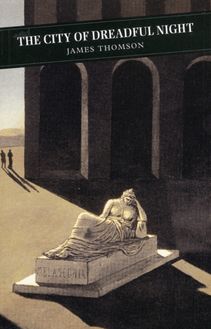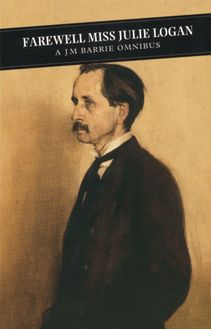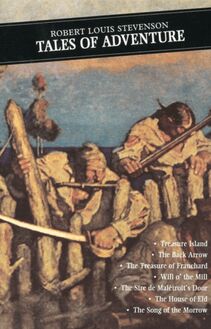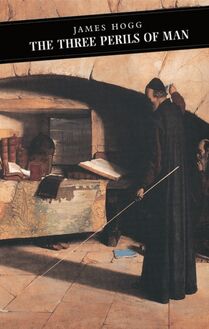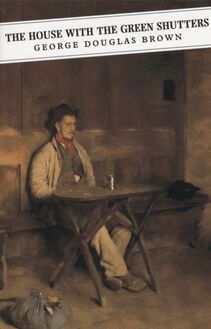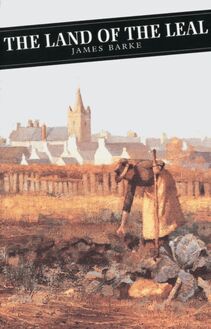Witch Wood , livre ebook
173
pages
English
Ebooks
2010
Vous pourrez modifier la taille du texte de cet ouvrage
Obtenez un accès à la bibliothèque pour le consulter en ligne En savoir plus
Découvre YouScribe en t'inscrivant gratuitement
Découvre YouScribe en t'inscrivant gratuitement
173
pages
English
Ebooks
2010
Vous pourrez modifier la taille du texte de cet ouvrage
Obtenez un accès à la bibliothèque pour le consulter en ligne En savoir plus
Publié par
Date de parution
01 juillet 2010
Nombre de lectures
1
EAN13
9781847675262
Langue
English
Publié par
Date de parution
01 juillet 2010
Nombre de lectures
1
EAN13
9781847675262
Langue
English
John Buchan
WITCH WOOD
Introduced by Christopher Harvie
to Walter Buchan
Contents
Introduction
Prologue
1. The Coming of the Minister
2. The Road to Calidon
3. Guests in Calidon Tower
4. The Faithful Servant
5. The Black Wood by Day
6. The Black Wood by Night
7. The First Blast
8. The Second Blast
9. Before Lammas
10. What the Moon saw
11. The Minister Girds up his Loins
12. The Man with the Squint
13. White Magic
14. The Counterblast
15. Hallowmass
16. The Witch Hunt
17. Woodilee and Calidon
18. The Plague
19. The Sacrifice
20. The Judgment
21. The Going of the Minister
Epilogue
Glossary
Introduction
Witch Wood was John Buchan’s favourite among his novels, but it was not as successful as the ‘shockers’ which made him famous. Yet it is set in a landscape close to Buchan’s heart, and it throws an indispensable light on his relationship both to the social role of the writer and to ‘the madness of Scotland’. Given that Witch Wood is also a long and carefully-contructed work, how one judges it is important in the process of re-assessing Buchan, which is now revealing him as one of the half-dozen or so major Scottish writers of our century.
In the course of the career which took him from the Free Kirk Manse in Perth in 1875 to Rideau Hall in Ottawa, Buchan’s output as poet, historian and editor as well as novelist, is so formidable, and of so high a quality, that it is necessary to realise how marginally he was once regarded. He is notably absent from the correspondence of writers with similar interests George Orwell and Joyce Cary and the response to him of the English literary intelligentsia was aptly summed up in 1940 by Virginia Woolf, a close friend of his wife:
… and John Buchan has fallen on his head and is, apparently, dying. I have already composed a letter to Susie who, poor goose, will be crying her eyes out, over there in the great carpeted Palace that she hated so. I think she ‘adored’ him: that is being a goose, believed poor prolific John to be a kind of Providence. I remember all the mss bound in blue morocco scarcely corrected a kind of genius, she said wistfully looking for some corroboration. Indeed she flattened me out with John’s biographies.
What were the grounds for this deprecation? The prosecution case is that Buchan was a craftsman who always worked well within his capabilities, and took few risks. He used well-chosen formulae with great skill, but played particularly safe with the emotions and sensations which the psychoanalytical revolution had pushed to the centre of the ‘modernist’ consciousness: the literary equivalent to the ‘safety first’ politics of his friend Stanley Baldwin.
Is Witch Wood merely Buchan at work on some expert carpentry, adapting his research for the revision of Montrose (1928) into the raw material of a novel, and securing the various building blocks with techniques mainly drawn from his next subject, Walter Scott? In many of its passages, Witch Wood (published both serially as The High Places in the British Weekly and as a book under the present title in 1927) is certainly a graceful tribute to the Scottish literary tradition. It takes in the polemics of the seventeenth century, the historical precision of Galt, the broad humour of Scott’s A Legend of Montrose (1819) and the supernaturalism of Stevenson in Thrawn Janet (1881). The villain, Ephraim Caird, reflects Robert Wringhim in James Hogg’s Private Memoirs and Confessions of a Justified Sinner (1824), a book which Buchan’s friend Andrew Lang had helped rediscover in the 1890s. Woodilee is Upper Tweeddale as Buchan’s Masterton ancestors would have known it, without the obsessive topography which impedes his early John Burnet of Barns (1898). The story of David Sempill’s struggle with the powers of darkness has the compulsion of the best of Buchan’s ‘shockers’; while the climactic battle with the plague plainly derives from his own experience combating epidemics in 1901–2 in the South African concentration camps.
Yet, the spirit of Witch Wood what Henry James would call the ‘commanding centre’ is not derivative. Even more than other Buchan novels, this is one to which one continually comes back, to recognise new dimensions, profundities hitherto concealed in the ‘rattling good tale’. Buchan was a complex man writing in a simple style, and nowhere is this more apparent than in a work which was as significant in its relation to the time in which it was written as to its historical subject.
Buchan was writing of revolution in a revolutionary epoch. Between 1914 and 1918 he had recorded the history of a war which had seen, as in the mid-seventeenth century ‘the world turned upside-down’: the end of the European Empires, the Bolshevik revolution, the shaking-apart of old political loyalties in Britain. Scotland was not exempt. In November 1922 the Labour Party swept home in the West, and the Covenanters’ psalm 124 ‘Now Israel may say …’ saw the ‘Clydesiders’ off South from St Enoch Station in Glasgow. A year later Labour under Ramsay MacDonald formed its first government. This was not something Buchan recoiled from, as Kipling did. Hovering around the fringes of the Liberal-Conservative élite since his return from South Africa in 1906, Buchan could see that Labour was ‘safe’. His friend and early patron, R. B. Haldane, became MacDonald’s Lord Chancellor. At the same time he had seen all the structures which held civilisation together torn apart, and had himself served in that debatable land where intelligence and propaganda used questionable means to serve ends themselves increasingly questionable. Before the war, in the novella The Power House (1913), Buchan had given his first arch-conspirator, Andrew Lumley, the line:
You think that a wall as solid as the earth separates civilisation from barbarism. I tell you the division is a thread, a sheet of glass.
Perhaps Buchan’s most famous line, this has a pedigree running back to Thomas Carlyle. Yet the threat was probably not one he himself took seriously until it was made flesh in 1914–18. Thereafter Buchan saw the superman and the implacable ideologist irrupting from the ruins of the old order.
As in Soviet Russia, so in seventeenth-century Scotland, where the Covenant of 1639 implied the same overthrow of traditional authority. The later Solemn League and Covenant (1643) by which the Kirk allied with the English parliament to impose presbyterianism south of the Border the occasion of Montrose’s breach with the Scots Kirk could also be seen as an effort to ‘export revolution’. The idea of the Covenant, moreover, went beyond politics as it also comprehended an ideal of Divine justice in which man must continue to live out God’s will on earth, even although he is already judged for good or ill under Heaven. The life of Montrose, like that of Buchan’s David Sempill, was fully caught up in this mixture of revolutionary ardour and legalistic theology.
Like Scott and Stendhal, Buchan chooses to pitch his personal drama in a precise historical context but at the fringe of great events. In so doing he opts for a mis en scène recurrent in Scottish fiction: the minister and the parish. David Sempill is a typical ‘man-in-the-middle’ like the heroes of the Waverley Novels: a classicist, a humanitarian, a man of some means in a society pervaded by dogma and desperately poor. He is impulsive, romantic, inept, and although, in the person and argument of Montrose, he encounters a polity which could serve his ideals, he cannot cope with the complex political manoeuvres of the time, or with the moral sickness which afflicts his parish.
The diagnosis of this more intimate drama falls to the dyspeptic James Fordyce, one of a choric group of ministers whose periodic confrontations with David comment on the action. To Fordyce the dogmatics of Covenant theology have tilted the balance too far in the direction of the ‘unco guid’. This corrupting, fanatical spirit, so alive in Fordyce’s confreres, the politic Muirhead and the fanatic Proudfoot, perverts the older, innocently pagan usages of Woodilee into the obscene and vindictive rites of its coven. Ephraim Caird, the Covenanter of 1639, is also Woodilee’s ‘Heid Deil’.
It is here that we can trace not only Buchan’s political Via Media but his anthropological interests: the concern with ritual and folk-tale that he derived from J. G. Frazer’s The Golden Bough (first published in 1890) and his friendship with Andrew Lang. Buchan’s Christianity was of the ‘modernist’ Scoto-Oxford-Hegelian son which saw God incarnate in man’s capacity to reason. But the traditional and the customary nevertheless remained important. In a poem of the 1900s ‘Wood Magic’ he wrote of a peasant warily respecting an old altar, in a style which echoes Frazer:
Wherefore to God the Father, the Son, and
the Holy Ghost,
Mary the Blessed Mother, and the kindly Saints
as well,
I will give glory and praise, and them I cherish the most,
For they have the keys of Heaven, and save the soul
from Hell.
But likewise I will spare for the lord Apollo a grace,
And a bow for the Lady Venus as a friend but not
as a thrall.
’Tis true they are out of Heaven, but some day they may
win the place;
For gods are kittle cattle, and a wise man honours
them all.
The rituals around the Roman altar in the wood could have been innocent; the place is nigh to the Paradise of Katrine Yester (a figure, as Janet Adam Smith rightly points out, of the ballads, not of flesh and blood), but the ‘divided self’ of Calvinism has created the Cairds who make them evil. In this context both David and Montrose are men destroyed by the society they wish to purify: personifications of the Christian atonement and Temporary Kings out of the Frazerian ritual: guardians of the shrine whose fate is to be killed. ‘The madness of Scotland’ stems from the fact that Calvinism broke the continuity of this r
